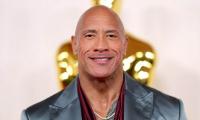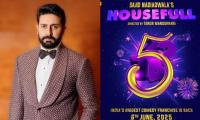There was a touch of drama in that episode that deserves a footnote in the history of Pakistan’s struggle for democratic survival. And the issue it highlighted, though familiar and generally taken for granted, has corrupted and debased the entire structure of power and governance.
I am referring, of course, to what happened in the Supreme Court’s courtroom 4 in Islamabad on Thursday. During the hearing of the local government election case, Justice Qazi Faez Isa, while presiding over the two-judge bench, raised the question of whether the media in Pakistan was free.
Present in the courtroom were reporters who represented various media houses. Turning to those journalists, who would be senior enough to be assigned to the Supreme Court, Justice Isa asked them to raise their hands if they believed that the media was free. No hand was raised.
Then, in that instant referendum, Justice Isa asked the journalists to raise their hands if they thought that the media was not free. All hands went up. The other judge on the bench, Justice Maqbool Baqar, said that this was the first time that the results of a referendum were 100 percent. He said that restrictions were also being imposed on social media.
I would like to quote an observation made by Justice Isa: this country is being destroyed in a systematic manner. One would assume this to be also a kind of a verdict. It should make us think about the specific circumstances which would constrain two venerable judges of the Supreme Court to express these views.
Since the hearing pertained to local bodies’ polls in Khyber Pakhtunkhwa, it was stressed that holding local bodies’ elections is a constitutional requirement. Justice Baqar observed that dissolving local bodies without any reason was not only a crime but tantamount to high treason because it deprived people of their democratic rights.
Now, if we restrict our focus to the media, a statement that it is not free and is controlled would not need to be contested. Everyone knows it, whether they raise their hands or not. In fact, the situation has never been ideal. But, having spent more than five decades in this profession, I can testify that things had never been so bad. Not even during the dark days of Ziaul Haq’s military rule, when we were aware of the rules of the game.
Certainly, the media landscape is now vastly different. We live in a digital world and have to contend with social media, with all its complexity. The realm of professional journalism has been invaded by faceless troopers of unknown masters. I could invoke “the darkling plain” of Matthew Arnold “where ignorant armies clash by night”.
Still, the control that is exercised by the authorities on the media is part of a systematic suppression of independent thinking and its expression. This operation is conducted in a flagrant violation of democratic freedoms. There are numerous examples of how individuals and organisations that hold liberal and progressive views are hounded and how fundamental human rights are violated.
Besides, there is copious documentation, done by international media and human rights associations, about the suppression of media in Pakistan. It is not for nothing that Pakistan is certified as a very dangerous country for journalists. However, this is not the occasion to go into these details. I feel more concerned about the two judges’ dire warning about the national sense of direction and its linkage with the absence of media freedom.
When freedom of thought and expression is suppressed in a country, its consequences can be manifold. Our state of affairs is exceptional. At the same time that independent media is suppressed, elements that promote religious extremism and intolerance are able to roam free and are sometimes patronised.
Sadly, this antipathy towards critics of those in power and of the ruling ideas extends to the sacred precincts of the academe – the world of learning and research. This lack of academic freedom is one dimension of our system of education.
Having said all this, I would hesitate to vouch for the quality and professionalism of the mainstream media that we have in this country. It is something media practitioners do worry about. A critical review of the media would surely be in order. It has been my refrain that the media’s obsession with partisan politics has subverted a serious and insightful coverage of the state of our society.
This is another area of study. In their search for ratings, news channels merrily cater to the lowest common denominator. A certain appetite has been created for the kind of talk shows that we have, where the usual suspects chew their political cud. It is interesting that even some anchors of these shows have their shows on YouTube and other social media platforms. This is another measure of restrictions on the media.
Naturally, our present rulers and wielders of power would not concede that the Pakistani media is in chains. They may also point towards some supportive voices in the media. But one can be sure that they too are conscious of where the red lines are drawn. It will be very hard for them to raise their hands to confirm an assertion that the media in Pakistan is free.
In these dizzy days of fake news and information overload, it is soothing for a journalist as old as I am to recall those struggles for press freedom when the print media was in its heyday. That adage, printed under the masthead of one newspaper, now seems so dated: “The press and the nation rise and fall together”.
But if you think of the press in its wider connotation, this analogy can be very meaningful. Perhaps it was in this spirit that Justice Isa tagged the idea of media freedom with the working of a democracy, in the context of local bodies. You may also think of his remark that the situation concerning the media was better during the last dictatorship. This is the kind of democracy that we have.
The writer is a senior journalist.
Email: ghazi_salahuddin@hotmail.com
The government can directly influence economic activity through current and capital expenditure
A view of the Supreme Court of Pakistan. — Supreme Court website/FileWhat kind of firewall does the judiciary...
Indian soldiers stand alongside a barbed wire on the Line of Control. — AFP/FileAnti-Pakistan propaganda remains a...
A representational image showing farmers harvesting wheat crops in a field. — AFP/FileThere is a clear, lasting, and...
Pakistan's first president Major General Iskander Mirza while speaking with the Turkish Prime Minister Adnan...
Prime Minister Shehbaz Sharif pictured alongside President Asif Ali Zardari. — INP/FileBeing a man of action in...







